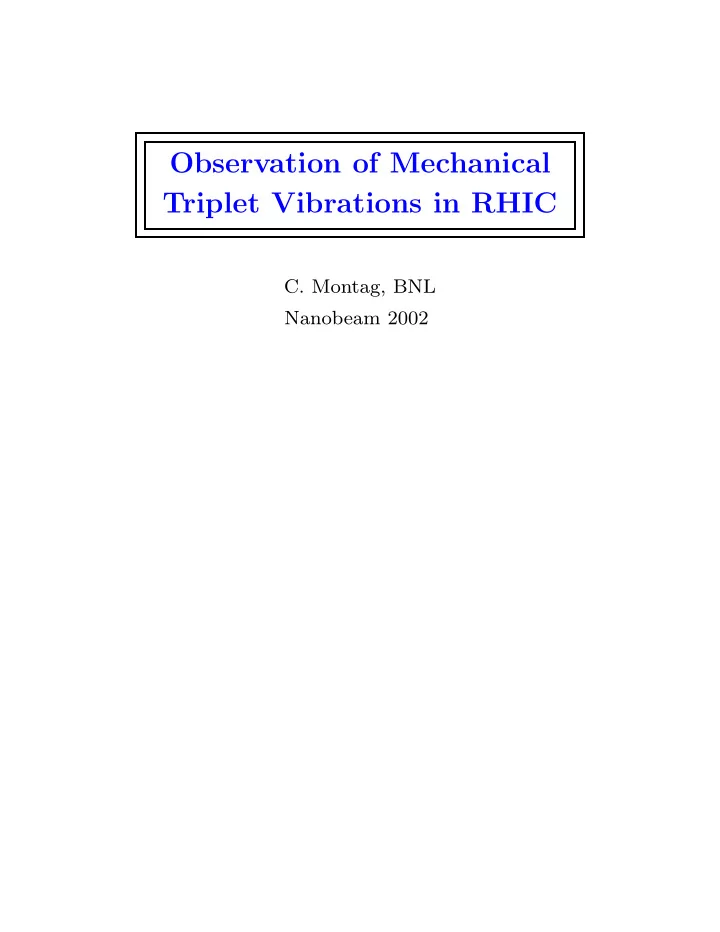

Observation of Mechanical Triplet Vibrations in RHIC C. Montag, BNL Nanobeam 2002
Overview of RHIC: 12 o’clock Polarimeters 2 o’clock 10 o’clock BRAHMS PHOBOS 8 o’clock 4 o’clock STAR N RF 6 o’clock W E PHENIX Injection S BLUE YELLOW Superconducting two-ring heavy ion collider, 3.8 km circumference, γ Au ≈ 100 .
Spectra of horizontal BPM signals in both rings: Total amplitude corresponds to ≈ 5 . . . 10% of the rms beam size. Similar spectra → common source.
Schematic overview of a RHIC interaction region: 1.0 D0 D0 0.5 DX DX IP x/m 0.0 −0.5 Q3 Q2 Q1 Q1 Q2 Q3 6 o’clock triplet 5 o’clock triplet −1.0 −100.0 −50.0 0.0 50.0 100.0 s/m Triplet quadrupoles share a common cold mass for both beams.
Spectra of horizontal beam and triplet motion (IP 4 triplet):
Dominant frequency lines in the horizontal BPM spectrum, and corresponding triplet locations: Frequency Triplet 7.75 12 8.825 8 10.14 4, 11, 12 10.625 9 10.825 2 11.00 11 11.325 6 12.700 (10) 13.000 1 13.275 unknown 13.55 9, (2) 14.325 2 15.950 2 16.133 4 16.500 8
Mechanical resonance frequencies of the cold masses in the cryostat. Mechanical model: Quadrupole f d / Hz f q / Hz Q1 21.2 15.8 Q2 14.0 14.3 Q3 15.0 14.1 • Resonance frequencies of this simple model are very close to observed ones. • Vibrations disappeared when machine was warmed up.
RMS closed orbit distortion: √ � � β ( s ) � β � σ q σ co ( s ) = N 2 sin πν | f | Observed rms beam jitter corresponds to rms quadrupole jitter amplitudes of σ q ≈ 0 . 5 µ m . For the triplets as a whole, σ triplet ≈ 10 µ m . Measured rms amplitudes on triplet cryostats are 200 nm at most. → Beam jitter is caused by vibration of the cold masses within the cryostat, rather than by motion of the entire triplet.
Anti-symmetric IR optics results in relative beam offset at IPs: F D F F D F DX DX IP D0 D0 D0 D0 D F D D F D
Modulated beam-beam interaction may be the source of emittance growth at the begin of each luminosity run: Simulation studies are in progress to investigate this effect.
Conclusion • IR triplet vibrations have been identified as source of horizontal beam jitter around 10 Hz. • Driving force seems to be related to cryo system. • Measurements inside one triplet beam pipe in progress. • Plan to permanently attach accelerometers to cold masses in one triplet. • Modulated beam-beam offset probably causes emittance dilution at the beginning of each luminosity run (needs to be investigated).
Recommend
More recommend